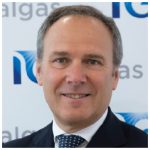
Dear Shareholders and Stakeholders, If 2020 was the year of a clear break from the world as we knew it to that shaped by the health emergency, 2021 – with the recovery of the economy and consumption – will probably go down in history for what has been, by various parties, associated with a new “energy shock”. A continental crisis, which has not yet been overcome, has forced governments to take urgent action to mitigate the impact on bills and to consider what solutions they can possibly adopt in the medium/long-term to address any similar situations.
Although the result of a series of contingencies, this “perfect storm” started a long way back. And the geopolitical issues tied to the commissioning of the North Stream 2 are just the tip of the proverbial iceberg. There are, in fact, industrial type considerations that have driven the cost of the gas commodity up so far as to more than triple it and require a structural approach. Amongst others, the clear decline in production from renewable sources recorded as the year drew to a close, the speculative action of certain European countries (with the exception of Italy) in filling storage facilities and the increase in the demand for gas by Asia, which further accentuated the phenomenon that saw a great many liquefied natural gas cargoes be redirected east, away from their original destination in Europe.
There is no one solution to the problem of expensive energy. There are strategic choices, which, when included in an organic plan, can reduce our continent’s exposure to market oscillations. The introduction of a Europe-wide policy to regulate the filling of storage and greater diversification in sources of supply are just two of the most urgent, debated hypotheses. Indeed, as regards diversification, the role played by renewable gas is increasingly central, both in order to achieve the decarbonisation targets and to substantially reduce imports. We need merely consider biomethane, which, with 5% of the European Union’s gas demand, is today the most significant renewable source, but still a long way off its real potential use, which various studies set as 10% of consumption in Italy and between 25 and 30% in Europe by 2030.
And this is why gas networks are a strategic pillar in the energy transition, as well as an asset – we are talking about two million kilometres of infrastructures in Europe, 200,000 of which are in Italy – to be further enhanced through their complete digitisation. This vision is now widely shared even by the European Commission. The gas infrastructure is, in fact, considered a powerful leverage, which can assure flexibility to the energy system with the twofold task of storing and carrying energy. A smart, flexible, digital network can collect, manage and recognise the various gas flows, receive and execute instructions from a remote position, optimise assets; together with its capillary structure, it also acts as a major stimulus for greater green hydrogen and biomethane production.
This change in general thinking is also due to the intense advocacy over the years by GD4S, the Association that, together with Italgas, represents the main DSOs of gas distribution in Europe, contributing towards overcoming the ideology of the dichotomy of energy sources and stressing the importance of taking a holistic approach in order to achieve the net zero target. Collaboration with associations like Eurogas, Geode and Cedec then made it possible to represent the voice of 90% of operators in our sector on the European Commission tables and, through it, to take the commitment to make sector coupling a reality to a whole new level and, accordingly, collaboration between electricity and gas as the main route towards a zero-emissions future.
Emissions is another area in which digitisation becomes a valuable ally. Zeroing them is an essential challenge for the environment. And Italgas is already winning, partly thanks to the adoption of Picarro Surveyor, the most cutting-edge technology available in the preventive monitoring of gas networks. A thousand times more sensitive than traditional technologies (parts per billion vs parts per million), from 2018 to date, it has allowed our company to virtually zero (0.087%) network leaks. It is precisely because of this commitment and the important results achieved that we have chosen to join the Oil & Gas Methane Partnership 2.0: under the scope of the initiative promoted by the United Nations (UNEP), European Commission, Climate & Clean Air Coalition and Environmental Defence Fund, to help raise global awareness of the reduction of emissions and pool experience, that we have obtained Gold Standard recognition.
The common thinking is that we cannot manage what we cannot measure. Hence the choice to further strengthen reporting on our actions, adopting financial and non-financial performance indicators. Once again this year we have chosen to publish the Integrated Annual Report with the aim being to paint an effective and transparent picture as possible of the Group’s ability to create value over time, as well as of the underlying links between the strategic priorities, governance decisions, risks management and financial performance, and the social, environmental and economic context in which it operates. The principles of sustainability are now part of the corporate structure, the strategic choices and the operative processes; and it could not be otherwise in a context in which, in order to be able to help achieve a common threshold, the action of individuals, companies and organisations must comply with criteria of social and environmental responsibility.
Sustainability is at the very heart of planning in all areas. As DSO, we are called to satisfy the energy needs of our 7.76 million customers in a sustainable manner, through processes and technologies that are inspired by the highest standards of environmental protection, safety and efficiency. Our aim is to continue to drive evolution in our industry and be acknowledged as a global benchmark for the capacity to create innovation and play a leading role in achieving decarbonisation targets. An aim that takes concrete form in the five main cornerstones on which the 2021-2027 Strategic Plan is hinged: (i) digital transformation and technological innovation; (ii) repurposing, upgrading the infrastructure to collect and distribute renewable gases and its extension including through M&As and ATEM tenders; (iii) new growth opportunities by optimising the Group’s competences in energy efficiency, water and IT services; (iv) insourcing of core competences, a further drive on the reskilling and upskilling of people; and (v) solid, efficient financial structure.
In this context, Sardinia remains emblematic as one of the main fields of application of our Plan: on the island, we have, in two years, successfully risen to the challenge of methane, moreover equipping our basins with some of the country’s most cutting-edge networks that are able to distribute not only natural gas but also biomethane, synthetic methane and green hydrogen. Another important Italgas project in that region in fact focusses precisely on green hydrogen. In Sardinia, we are developing the very first technological showcase of the entire chain, which will allow us to produce and store hydrogen, use it for public mobility and the local industry and residential utilities. It is a project that will allow us to get ahead in the creation of a European hydrogen market and, in order to contribute towards this, Italgas has also adhered to the “Ready4H2” initiative, which brings together 90 natural gas distributors from 17 different countries across Europe.
Our “Sardinia model” will, on a larger scale, be the benchmark that will allow us to effectively flank the action of the Greek government to achieve the decarbonisation targets. Last December, in fact, we signed the contract for the purchase of 100% of DEPA Infrastructure S.A., Greece’s main gas distribution operator. This threshold allows us to go back to working abroad after approximately 20 years away from it and which, at the same time, represents the acknowledgement of our technical and technological leadership, proving we are a strategic partner with which to quickly and concretely address the carbon and lignite phase-out process, focussing on gas networks.
Together with the networks, another strategic sector for achieving environmental targets, is that of energy efficiency. And Italgas made the choice some time ago to act as consolidator of a market that was still very much fragmented. In the last year, the subsidiary Seaside has enriched itself with specific competences, acquiring them from the merger of Toscana Energia Green and the acquisition of Ceresa, a long-standing operator of Piedmont. The operations also seek to rationalise and concentrate the know-how in a single subject that can then face up to the market with a wide portfolio of services. Similar reasoning was behind the establishment of Bludigit, the company in which we have concentrated all the Group’s Information Technology business and the Digital Factory. It is a choice that represents the natural evolution of the digital transformation and that allow us to further enhance efficiency and control costs, developing new synergies both within and outside the Group, all with the logical approach of service provider.
The attention paid by Italgas to environmental, social and ethical topics has also led to the choice to include precise emission reduction and energy efficiency targets in the latest Strategic Plan unveiled to the market, along with the development of skills and enhancement of resources to make the change effective: these are clear commitments that are regularly reported on and with respect to which you will find information in this Report on the progress made on the important results achieved during this first year. It is an approach that has helped increase the consideration given by investors and analysts to Italgas and with it, also the confirmation of the Group’s growth on the main international sustainability indexes, from the FTSE4Good to the Dow Jones Sustainability Index World and Europe (for the first time ever), from the Carbon Disclosure Project to the Sustainability Yearbook of S&P Global.
Thanks to the contribution of all Italgas people who have combined change, innovation and improvement, the results achieved mean we can propose the distribution of a dividend of € 0.295, an increase of 6.5% on 2020 to the satisfaction of our Shareholders, in addition to an economic value generated by the Group equal to 2,247.2 million euros, of which the distributed value is 1,681.1 million euros (+8.0% on 2020).
Alberto Dell’Acqua
Chairman


Paolo Gallo
Chief Executive Officer and
General Manager

